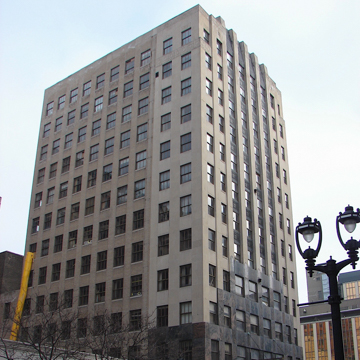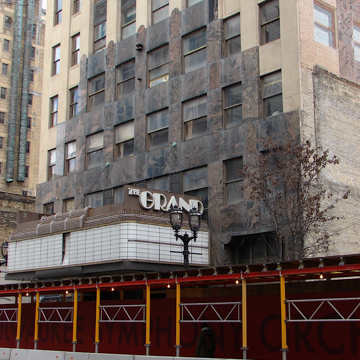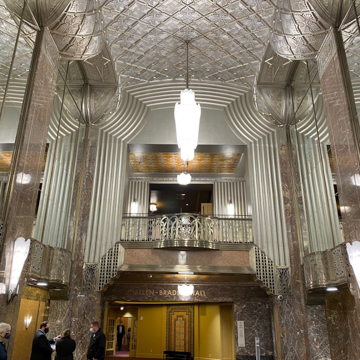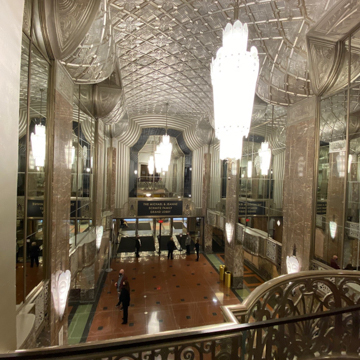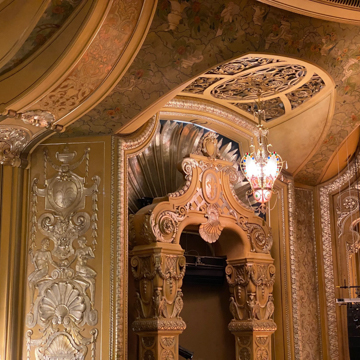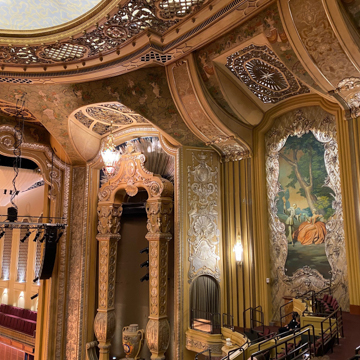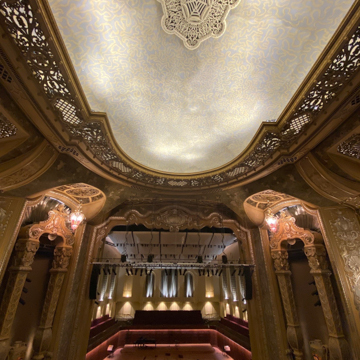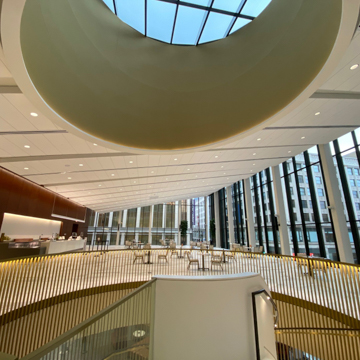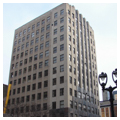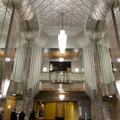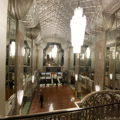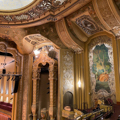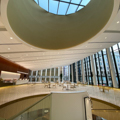You are here
Bradley Symphony Center
In the early twentieth century, W. Wisconsin (then Grand) Avenue was Milwaukee’s premier shopping street and theater district, thanks largely to nearby major hotels and streetcar lines. Around Grand Avenue and 3rd Street, nightlife bustled in nickelodeons, vaudeville halls, restaurants, and taverns. In the 1920s, elaborate movie palaces began to replace the smaller live stages and picture houses. The last grand theater built here was the Warner, named for the Warner Brothers studio that owned it. Chicago’s Rapp and Rapp, a prolific, influential theater design firm, created the twelve-story, limestone-clad theater and office structure. The exterior’s chaste composition emphasizing strong verticals, a large glass panel over the entrance, and restrained Art Deco ornament conceals one of the most fabulous cinema interiors in Wisconsin. Patrons entered a glittering gold-and-silver lobby. From there, they moved into a 2,500-seat auditorium, fantastically decorated in French neo-Baroque style, a favorite Rapp and Rapp design mode. Lavish ornamental plasterwork and hardwood trim imported from Italy and South America embellished the walls and ceilings, and murals depicted scenes of eighteenth-century French aristocratic life. In 1973 a ceiling was built beneath the balcony, creating an upper and a lower theater, but the upper one still reflects the grandeur of the original auditorium.
Jubilant fanfare greeted the Warner Theater’s opening in 1931. It ranked as Milwaukee’s favorite movie venue throughout the 1930s and 1940s when Hollywood’s allure reached its zenith and movie attendance peaked. The Warner, which closed in June 1995, was purchased and restored by the Milwaukee Symphony Orchestra, reopening with additional public space in the 2020-2021 season.
References
Higgins, Jim. "Milwaukee Symphony's new home will be called the Bradley Symphony Center." Journal Sentinel (Milwaukee, WI), February 13, 2020.
Writing Credits
If SAH Archipedia has been useful to you, please consider supporting it.
SAH Archipedia tells the story of the United States through its buildings, landscapes, and cities. This freely available resource empowers the public with authoritative knowledge that deepens their understanding and appreciation of the built environment. But the Society of Architectural Historians, which created SAH Archipedia with University of Virginia Press, needs your support to maintain the high-caliber research, writing, photography, cartography, editing, design, and programming that make SAH Archipedia a trusted online resource available to all who value the history of place, heritage tourism, and learning.


